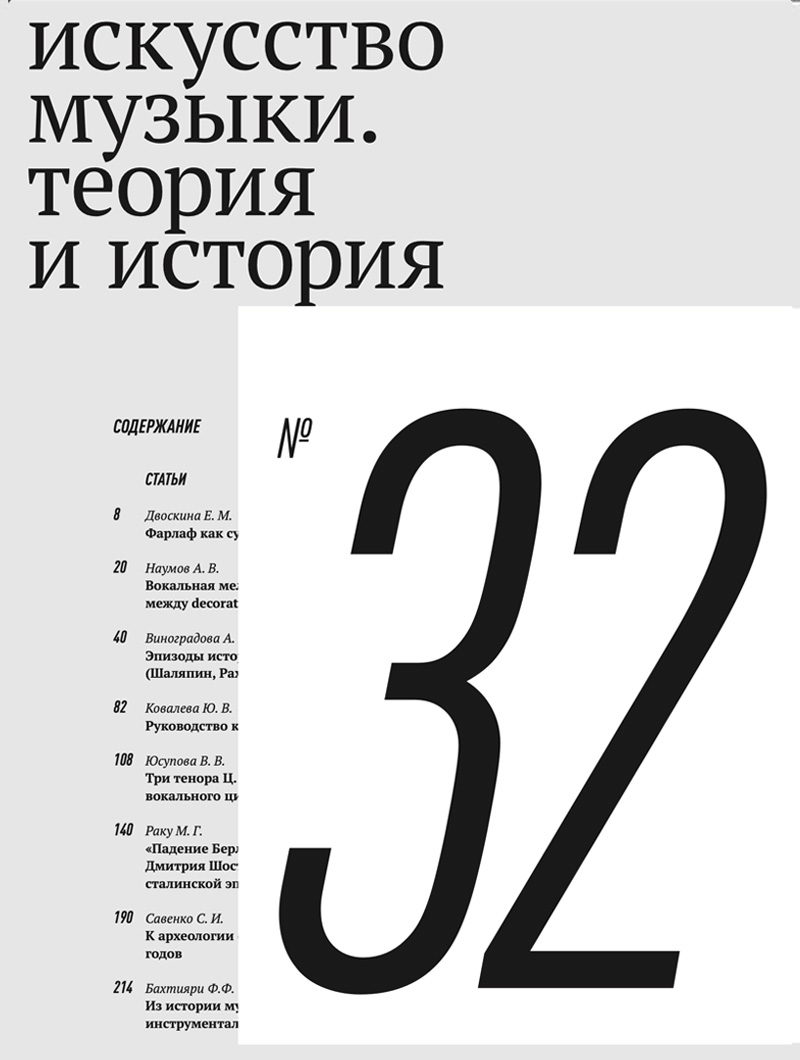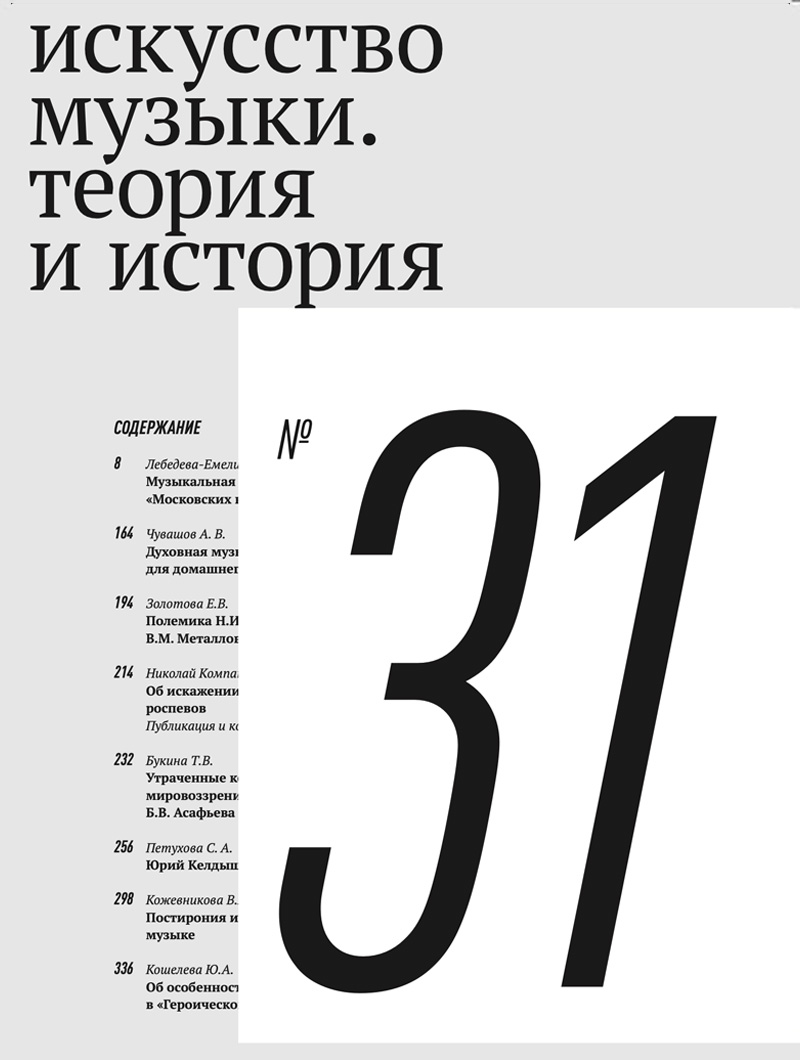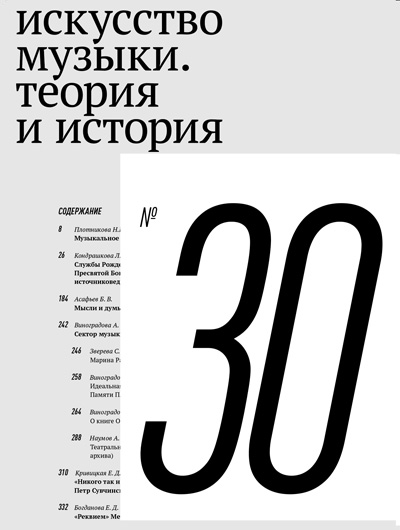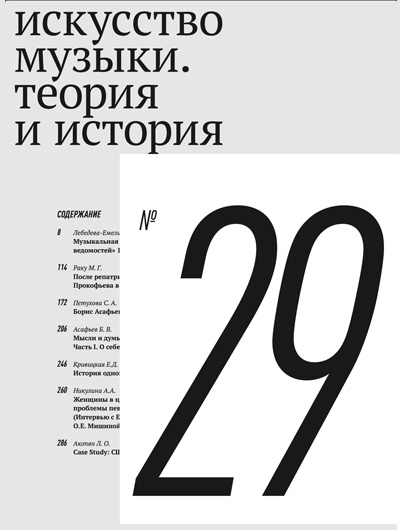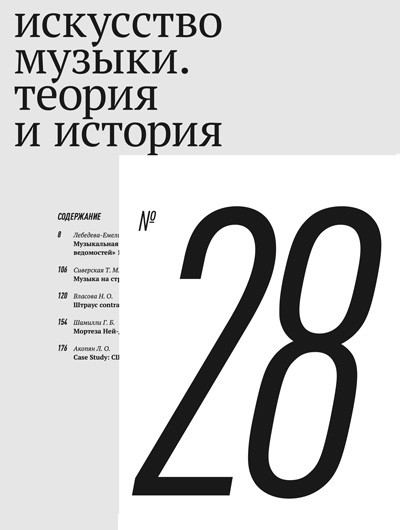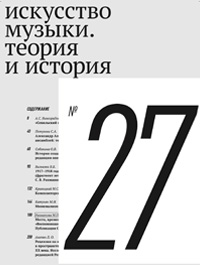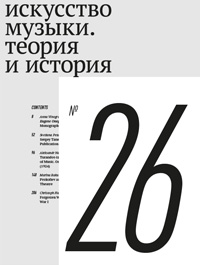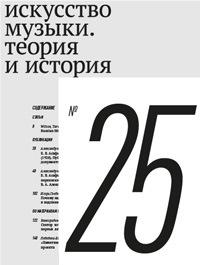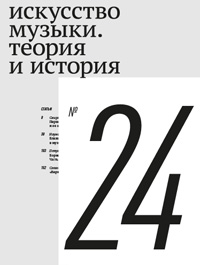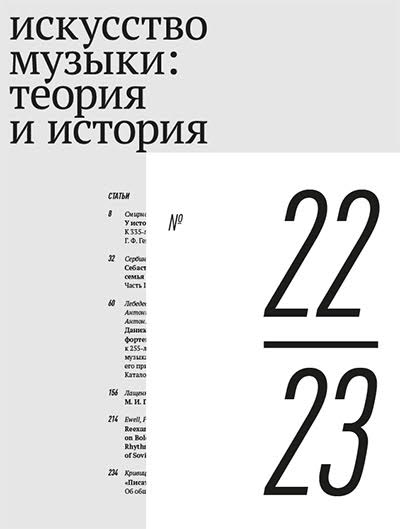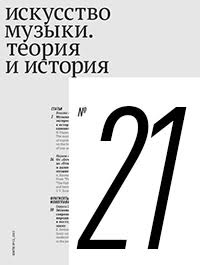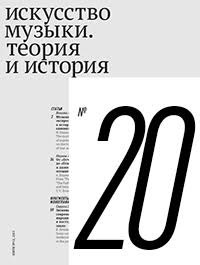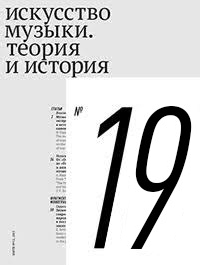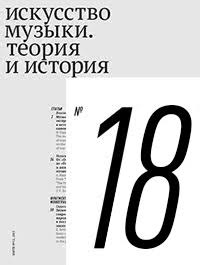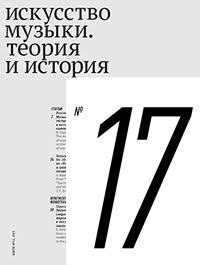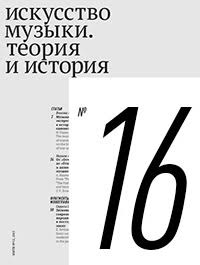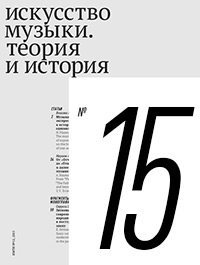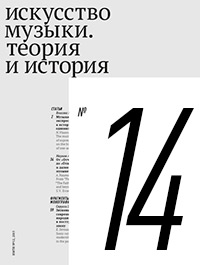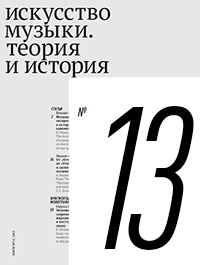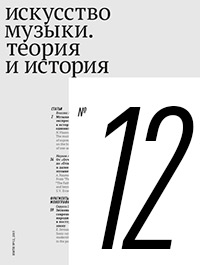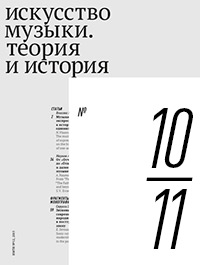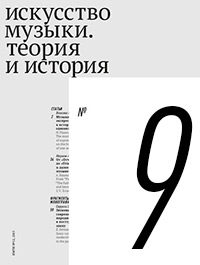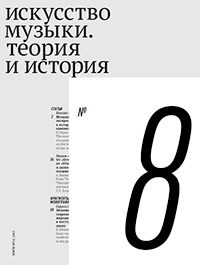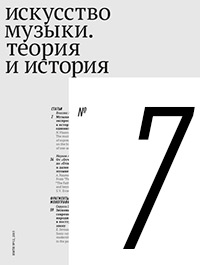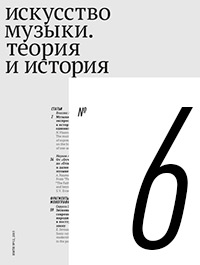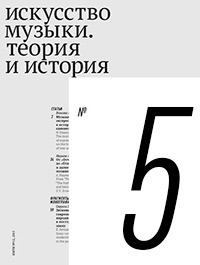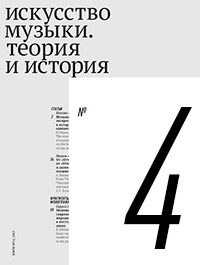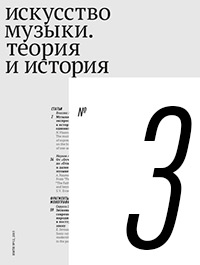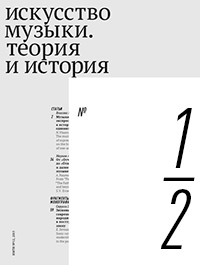2024 №31
Articles
Moscow’s Musical Life as Reflected in the Newspaper Moskovskie Vedomosti (‘Moscow Gazette’) Year 1787
For the first time, a collection of announcements from the Moskovskie vedomosti (‘Moscow Gazette’) of 1787 is presented. In describing the journey of Empress Catherine II to Taurida, it is supplemented by materials from the Chamber Fourier Ceremonial Journal and testimonies of contemporaries.
Key Words
During her months-long voyage to the south of the empire, Catherine II heard a variety of church singing, she was greeted with fanfares performed by trumpeters and timpanists, cants and cantatas performed by serf choirs and orchestras; operas and comedies were shown in city theatres. At the celebration in Moscow of the 25th anniversary of her accession to the throne, the prologue of M. M. Kheraskov’s composition with music by A. Bullandt (which has not survived) was performed. The festivities organized by Prince G. A. Potemkin in Kremenchug, the cities of the Yekaterinoslav province and the Crimea included theatrical battles, a naval battle, the ceremonial launching of newly built ships, balls, masquerades; during dinners, the Prince’s serf chapel performed works by Haydn, Sarti, Tietz, and Boccherini.
Among other events of 1787, we note the concert performances
at the Petrovsky Theatre of the flutist H. K. Hartmann, the oboist Garenton, the harpist K. T. Niemetschek, the pianists I. A. Stein and I. H. Firnhaber, the violinist A. Galetti, the singers N. V. Sokolovskaya, G. Cataldi, L. Todi, and the conductor M. Kertselli. M. Stabinger advertised a music school in his own home; the ballet master C. Morelli advertised his dance school. Due to reports from Paris and Vienna, the readers received information about the premieres of operas by G. Paisiello, A. Grétry, A. Sacchini, A. Salieri, F.-A. Philidor, N.-A. Dezède. The publication contains 50 illustrations.
Key Words
Moskovskie vedomosti, 1787, Catherine II’s journey, Taurida, Petrovsky Theatre, concerts, Stabinger’s music school, choreographers F. and K. Morelli, musical instruments
Dmitriy Bortnyansky’s Sacred Music in Arrangements for Domestic Music–Making (Setting a Problem)
The article deals with the arrangements of Dmitriy Bortnyansky’s sacred music intended for domestic music-making. Arrangements of this kind became widespread in Russia in the early 19th century. The piano transcriptions done by Archpriest P. Turchaninov on Bortnyansky’s request are examined, as are the unusual arrangements for choir and organ from the collection of Emperor Alexander I, stored now at the Ekaterininskiy (Catherine) Palace of Tsarskoe Selo. The topic is for the first time presented in scholarly literature. The published materials will enlarge the scope of our knowledge about a highly interesting and understudied period of Russian music culture, as well as about the tendencies in the development of the genre of piano miniature before Glinka.
Key Words
Domestic music-making, arrangements of sacred music, clavichord, organ, piano, Dmitriy Bortnyansky, Archpriest Petr Turchaninov, Alexander I, Empress Elizaveta Alekseevna.
Key Words
Domestic music-making, arrangements of sacred music, clavichord, organ, piano, Dmitriy Bortnyansky, Archpriest Petr Turchaninov, Alexander I, Empress Elizaveta Alekseevna.
Controversy Between N. I. Kompaneyskiy and Priest V. M. Metallov on the Principles of Arranging the Znamennïy Chant
The polyphonic arrangement of church chants was a key issue for the composers of the New School in Russian sacred music, as well as for the music criticism of the early 20th century. Authors of previous periods did not always manage to preserve ancient sources and express the specificity of chant structures in polyphony. In 1891, priest Vasily Mikhailovich Metallov published a collection of “Sacred Musical Works for Mixed Choir,” which included 13 arrangements of the Znamennïy chant. In the chant “To Thee Who Art Clothed,” the arrangement of chants and shorter motifs in different voices leads to a break in the melodic line and the actual loss of the original source. The methods of arrangement of the Znamennïy chant in this piece were criticized by the St. Petersburg composer and publicist Nikolay Ivanovich Kompaneyskiy in an article of 1903 written for Russkaya Muzïkal’naya Gazeta (“Russian Musical Newspaper”). The article remained unpublished at that time; its autograph manuscript, preserved in the Manuscript Department of the Russian National Library, shows how dissimilar were the aesthetic positions of the two authors and how intense was the controversy over current issues of national church style.
Key Words
V. M. Metallov, N. I. Kompaneyskiy, Russian Ortodox Church singing, Znamennïy chant, strict style of harmony.
Key Words
V. M. Metallov, N. I. Kompaneyskiy, Russian Ortodox Church singing, Znamennïy chant, strict style of harmony.
On the Distortions of Authentic Church Tunes Made by [V. M.] Metallov. Publication and comments by E. V. Zolotova and N. Yu. Plotnikova
Nikolay Ivanovich Kompaneiskiy (1848–1910) was a well-known St Petersburg music critic and composer of the turn of the 19th and 20th centuries, an active supporter of the New Direction in Russian sacred music. Many of his articles devoted to current issues in church singing were published in such journals as Muzïka i penie (“Music and Singing”), Muzïkal’nïy truzhenik (“Music Worker”), and others. The article “On the Distortions of Authentic Church Tunes Made by Metallov” was intended for publication in Russkaya muzïkal’naya gazeta (“Russian Musical Newspaper”); currently it is stored in the collection of the newspaper’s editor N. F. Findeyzen in the Manuscript Office of the Russian National Library (Fund 816. Inventory 3. Storage unit 2518). It is the apogee of a long polemic between Kompaneiskiy and Archpriest Vasiliy Mikhaylovich Metallov (1862–1926) — church chant scholar, teacher at the Moscow Synodal College, and member of the latter’s Supervisory Council. The text we are publishing shows how topical and burning the issue of polyphonic arrangement of chants was, and how emotionally the violation of the integrity of ancient tunes was perceived. The article did not find its reader during Kompaneisky’s lifetime, most likely due to the high intensity of the controversy and the harshness of the criticism directed at the highly respected priest and scholar. Here it is published for the first time.
Key Words
V. M. Metallov, N. I. Kompaneyskiy, Russian Orthodox church singing, Znamennïy chant, harmonization of the Znamennïy chant.
Key Words
V. M. Metallov, N. I. Kompaneyskiy, Russian Orthodox church singing, Znamennïy chant, harmonization of the Znamennïy chant.
Lost Contexts: Echoes of the Organic Worldview in Boris Asaf’yev’s Research Methodology of the 1920s
According to a number of Boris Asaf’yev’s biographies, his formation as a musicologist was strongly influenced by Henri Bergson’s teaching on intuition and organic worldview. A question remains, however, to what extent and in what particular aspects Bergson’s doctrine affected his scholarly work. The present paper examines this question on the material of Asaf’yev’s scholarly methodology. The author comes to conclusion that the organic paradigm determined a number of its remarkable features, such as a priority given to unique qualitative parameters of musical tissue that are inaccessible to precise musical notation, a focus on auditory experience, a special attention to synesthetic connections of music.
Key Words
Boris Asaf’yev, methodology of the Russian musicology of the 1920s, organic worldview, evidential paradigm, Henri Bergson.
Key Words
Boris Asaf’yev, methodology of the Russian musicology of the 1920s, organic worldview, evidential paradigm, Henri Bergson.
Yuriy Keldïsh: Biography and Texts
This article is the first attempt to trace the stylistic evolution in the writings of the authoritative music scholar Yuriy Keldïsh (Keldysh, 1907–1995) – from his harsh polemical statements in the RAPM press to a balanced, objectivist narrative in his fundamental music-historical reviews and monographs. The study is based on Keldïsh’s published works, as well as on his oral statements preserved in archival sources. The scholar’s biography provides rich material for this kind of
research. At all its stages, Keldïsh took an active socio-political position, which could not but affect the development of his writing talent. Analysis of texts from different periods – the 1920s, 1940s, 1960s – leads to the natural conclusion that the stylistic divide between polemical publications “on the topic of the day” and serious works “for eternity” runs through the second half of the 1940s. Those difficult years formed Keldïsh’s unique style, which until the mid-1960s was virtually indifferent to inner and outer emotional impacts, not leaving the reader with an unambiguous feeling of sincerity or falsehood even in short excerpts of the narrative. The article concludes with a discussion on Keldïsh’s later works and is supplemented with a list of his career achievements.
Key Words
Yuriy Keldïsh, Russian Association of Proletarian Musicians (RAPM), influence, style, career, Institute of Art History, History of Russian Music, scholarly academicism.
research. At all its stages, Keldïsh took an active socio-political position, which could not but affect the development of his writing talent. Analysis of texts from different periods – the 1920s, 1940s, 1960s – leads to the natural conclusion that the stylistic divide between polemical publications “on the topic of the day” and serious works “for eternity” runs through the second half of the 1940s. Those difficult years formed Keldïsh’s unique style, which until the mid-1960s was virtually indifferent to inner and outer emotional impacts, not leaving the reader with an unambiguous feeling of sincerity or falsehood even in short excerpts of the narrative. The article concludes with a discussion on Keldïsh’s later works and is supplemented with a list of his career achievements.
Key Words
Yuriy Keldïsh, Russian Association of Proletarian Musicians (RAPM), influence, style, career, Institute of Art History, History of Russian Music, scholarly academicism.
Postirony and Its Embodiments in Post-Soviet Russian Music
In the context of contemporary culture, postirony is a modification of irony, characterizing an intermediate state between irony and sincerity, oscillation (fluctuation) between these modes of feeling. The literary roots of the phenomenon are broad: similar trends were outlined already at the beginning of the 20th century in the poetry of writers grouped around the jounal Satyricon and were developed in the work of “oberiutes” and in the so-called soc-art. The most representative examples of the qualities of postirony are
works conceived in the spirit of soc-art. Works by Leonid Desyatnikov (Rite of Winter 1949) and Sergey Berinsky (Tears of the Heraldic Soul) represent different versions of the embodiment of Soviet myth and the poetics of soc-art. The balance between opposite modes of feeling in these works is also different; only the critical-nostalgic stance, the post-ironic author’s gesture, which contains a distanced and at the same time subjectively sincere author’s statement, remains unchanged.
Key Words
Postirony, irony, Sergey Berinsky, Rite of Winter 1949, Leonid Desyatnikov, Tears of the Heraldic Soul, Satyricon, oberiutes, soc-art.
works conceived in the spirit of soc-art. Works by Leonid Desyatnikov (Rite of Winter 1949) and Sergey Berinsky (Tears of the Heraldic Soul) represent different versions of the embodiment of Soviet myth and the poetics of soc-art. The balance between opposite modes of feeling in these works is also different; only the critical-nostalgic stance, the post-ironic author’s gesture, which contains a distanced and at the same time subjectively sincere author’s statement, remains unchanged.
Key Words
Postirony, irony, Sergey Berinsky, Rite of Winter 1949, Leonid Desyatnikov, Tears of the Heraldic Soul, Satyricon, oberiutes, soc-art.
About the Peculiarities of the Author’s Method of Composition in Aleksandr Vustin’s Heroic Lullaby (1991)
Aleksandr Vustin’s individual technique of composition was fully formed by the 1990s and became a universal way of embodying various concepts. In each new work, the same ideas were reinterpreted. Using the example of the sextet Heroic Lullaby, the author analyzes the composer’s mode of working with three basic principles of his method: the universal tone row, the principle of “twelvefoldness”, and the extended Obikhodnïy scale, first used by Yuriy Butsko. The choice of the work is related to its non-typical nature in the context of Vustin’s oeuvre. In addition to the transformations of the basic principles of his method, Heroic Lullaby attracts attention as one of the few examples of working with musical quotations. The piece is a kind of musical autobiography, the “chapters” of which allude to works by Beethoven, Debussy, Schoenberg, Mahler, and Mussorgsky. All such allusions are intentionally given inaccurately, “from memory”, and are always associated with the development of the tone row. In many ways, the interaction of tonal and serial systems is also innovative: the latter takes over the role of tonality, the tones of the rows take over the functionality, and the composer, as if in a parallel “layer”, introduces an auto-quotation — a tonal fragment from the music to the movie Anna Karamazoff.
Key Words
A. Vustin, Heroic Lullaby, serial technique, individual compositional technique, musical quotation, Yu. Butsko.
Key Words
A. Vustin, Heroic Lullaby, serial technique, individual compositional technique, musical quotation, Yu. Butsko.
DOI
